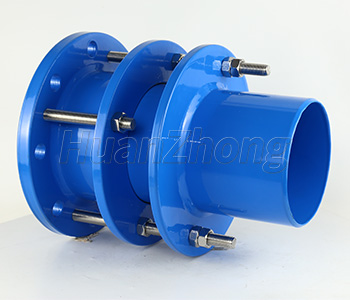Pressure resistance and soft sealing performance of monoflanged force transfer joints
Pressure resistance and soft sealing performance of monoflanged force transfer joints
The production of monoflanged force transfer joint strictly adopts high strength carbon steel or stainless steel, and high quality rubber. Using the principle of rubber compression elastic deformation, it is sealed under the action of gland and bolt. The sealing ring is strictly selected according to the performance and user requirements...
Monoflanged force transfer joint is suitable for connection with flange on one side and welding with pipe on the other side. There is a certain gap between the body and the expansion pipe, so that it has a certain axial and radial displacement, which can effectively compensate and relieve the pressure in the pipeline. The thrust and blind of the pipeline also facilitate the installation, maintenance and replacement of pumps and valves. It is actually the most ideal supporting product for pipeline installation and operation industry.

Monoflanged force transfer joints are used in the water supply and drainage and wastewater treatment industries, mainly for the connection between pumps, valves and pipelines. It has certain multi-directional displacement when the pipeline is running, which can reduce the blindness when the pipeline is running. The thrust plays a certain protective role for the pipeline, especially for the installation and maintenance of the pipeline provides great convenience. However, force transfer joints should be used at the outlet of the pump and at the corner of the pipeline because they can pass the thrust of the blind when the pump is started through the force transfer bolts (i.e. all-thread bolts) so that the thrust will not be concentrated at the near end of the pipe or pump and damaged by impact.
First, let's talk about the structure. The force transfer joint is made of alloy material. I'm sure you all know about alloy before. It has a very strong resistance to pressure. When it encounters pressure, it will deform according to the pressure of pressure, but it will not break. It means that the force transfer joint not only has a strong pressure resistance, but also is more outstanding in terms of flexibility.
Due to the good flexibility of the force transfer joint, it can clamp the pipe tightly and move along the pressure direction when it encounters pressure, so that a large part of the pressure is dispersed along the angle. This is one of the reasons for the poor pressure resistance of force transfer joints.
It is because of the excellent pressure resistance and sealing performance of monoflanged force transfer joints that they can be widely used in other industries. Monoflanged force transfer joints have excellent mechanical properties and the quality of products meets national standards. Each flange transfer joint has undergone strict inspection and testing, and the quality is worth your trust.
